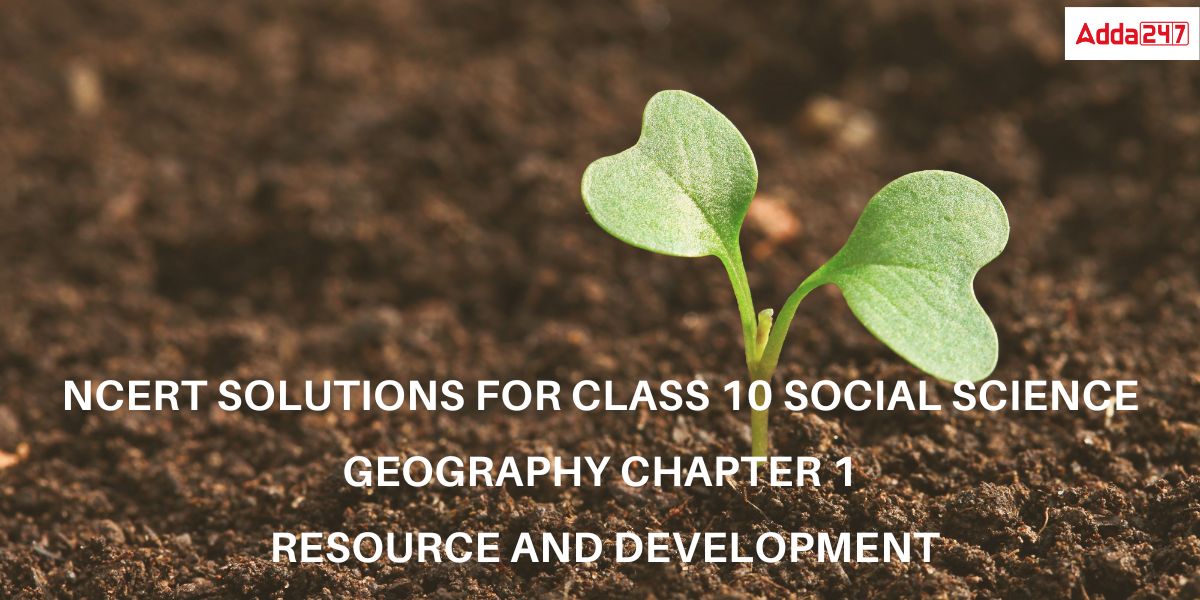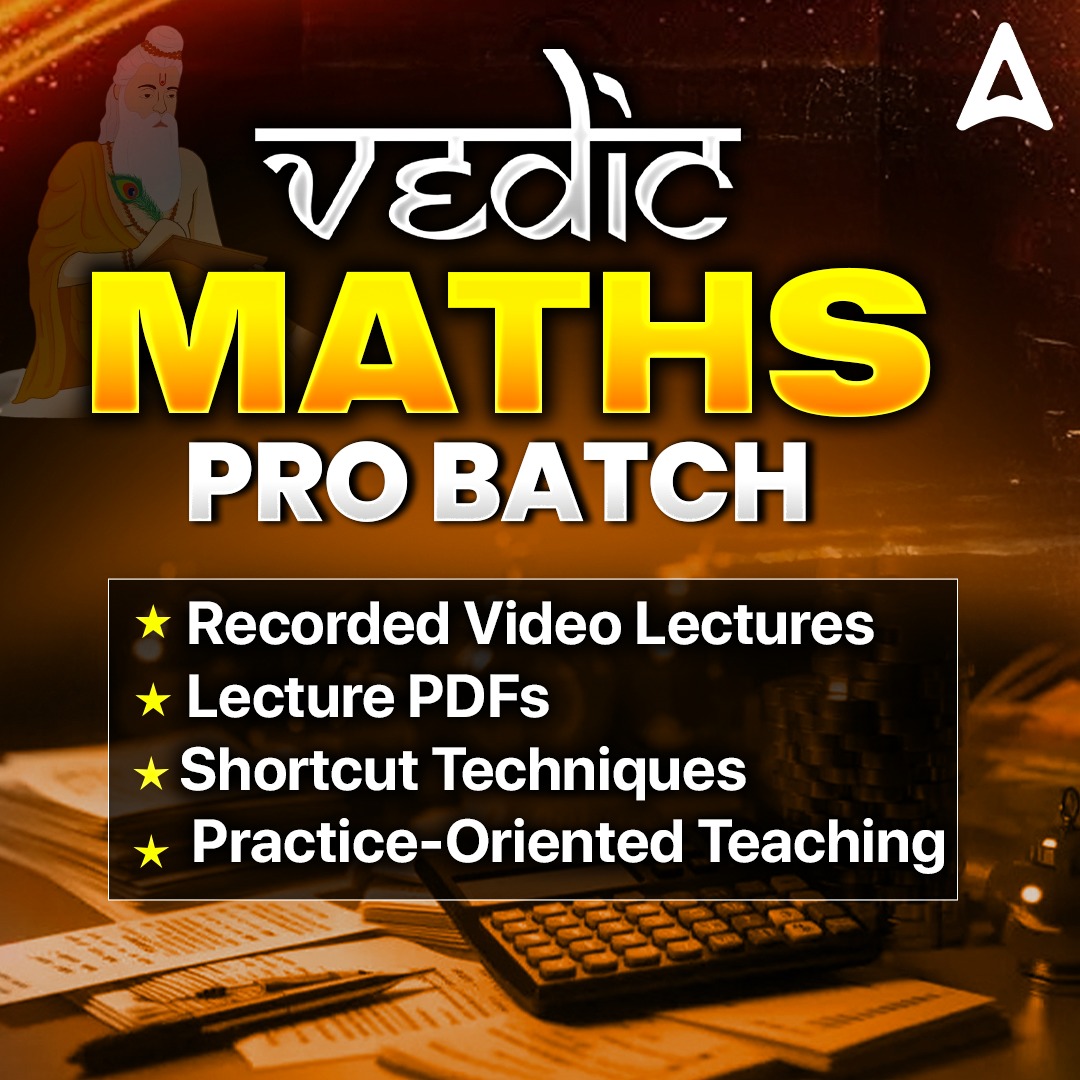Geography Class 10 Chapter 1 Question Answer
NCERT Solutions Class 10 is the best resource for obtaining a good score in the class 10 board Examination. The NCERT Solutions will aid your preparation for the CBSE examinations for Class 10 Geography Chapter 1 Resource and Development. Here are Adda247 Expert faculty team prepared geography class 10 chapter 1 question answer and exercises of that chapter for a better grasp of the topics. These class 10 geography chapter 1 solutions will help you understand the concepts covered in the chapter completely. So that students can pass their board exams with good scores. Keep learning with Adda247.
Read: NCERT Solutions for Class 10 Geography Chapter 2 Forest and Wildlife Resources
Class 10 Geography Chapter 1 Resource and Development: At a glance
Let’s take a quick look at the topics and subtopics covered in geography class 10 chapter 1 question answer. before solving the exercise questions.
- Types of resources
- Development of Resources
- Rio-de-Janeiro Earth Summit
- Agenda 21
- Resource Planning
- Conservation of Resources
- Land Utilisation
- Land use pattern in India
- Classification of soils
- Soil erosion and conservation
Class 10 Geography Chapter 1 Question Answer PDF Download
NCERT Solutions for Class 10 Geography Chapter 1 Question Answer PDF can help you learn about natural resources, their availability, and their best management. Click here to download NCERT Solutions for Class 10 Social Science Geography Chapter 1 Resource and Development
Class 10 Geography Chapter 1 Question Answer
1. Multiple choice questions.
(i) Which one of the following types of resource is iron ore?
(a) Renewable (c) Flow (b) Biotic (d) Non-renewable
Answer: (d) Non-renewable
(ii)(ii) Under which of the following type of resources can tidal energy be put?
a) Replenishable b)Abiotic c) Human-made d) Non-recyclable
Answer: (a)Replenishable
(iii) Which one of the following is the main cause of land degradation in Punjab?
(a) Intensive cultivation (c) Over irrigation
(b) Deforestation (d) Overgrazing
Answer:(c) Overirrigation
(iii) In which one of the following states is terrace cultivation practiced?
(a) Punjab (b) Plains of Uttar Pradesh (c) Haryana (d) Uttarakhand
Answer: (d) Uttarakhand
(iv) In which of the following states black soil is predominantly found?
(a) Jammu and Kashmir (b) Maharashtra (c) Rajasthan (d) Jharkhand
Answer: (b) Maharashtra
2 . Answer the following questions in about 30 words.
(i) Name three states having black soil and the crop which is mainly grown in it.
Answer: Black soils are trap lava derivatives found primarily in the interiors of Gujarat, Maharashtra, Karnataka, and Madhya Pradesh on the Deccan lava plateau and the Malwa Plateau, where there is moderate rainfall and underlying basaltic rock.
Cotton is mainly grown in black soil.
(ii) What type of soil is found in the river deltas of the eastern coast? Give three main features of this type of soil.
Answer: Alluvial soil is found in the river deltas of the east coast.
Three main features of this Alluvial soil are
- The nature of this soil is extremely fertile.
- The primary objective of alluvial soil is to grow vegetables.
- The alluvial soil is composed of different ratios of sand, silt, and clay in varying amounts.
(iii) What steps can be taken to control soil erosion in hilly areas?
Steps that can be taken to control soil erosion
(i)Plowing along contour lines can slow the flow of water down slopes. This is known as contour ploughing.
(ii)Terraces can be created by cutting steps into the slopes. Terrace cultivation helps to prevent erosion. Terrace farming is well-developed in the western and central Himalayas. Large fields can be divided into strips
(iii). Grass is allowed to grow between the crops. This reduces the wind’s force. This is referred to as strip cropping.
(iv) What are the biotic and abiotic resources? Give some examples.
Answer Abiotic resources are obtained from the lithosphere, atmosphere, and hydrosphere. Water, air, soil, sunlight, and minerals are examples of abiotic factors. Basically, abiotic sources are made of nonliving objects.
2. Biotic resources are organisms that are alive or were once alive in an ecosystem. These are obtained from the biosphere and have the ability to reproduce. For instance, plants, animals, people, etc.
3. The following questions in about 120 words.
(i) Explain the land use pattern in India and why has the land under forest not increased much since 1960-61.
Answer: In India, land resources are primarily classified as agricultural land, forest land, pasture, and grazing land, land for other non-agricultural uses (such as housing, roads, and industry), and wasteland (rocky, arid, and desert areas). In 2002-03, 54% of the total land area was cultivable or fallow, 22.5 percent was forested, and 3.5% was used for grazing. The rest was a wasteland with scattered traces of cultivation.
Improper use of forest land has reduced available land area and made forest conservation difficult. Human activities such as deforestation, mining, and quarrying have all contributed to forests’ slow growth rate. Thus, land under forest cover has increased by only about 4% since 1960-61.
(ii) How have technical and economic development led to more consumption of resources?
Technical and economic progress resulted in increased resource consumption in the following ways:
- It increased output, which naturally increased resource consumption.
- It resulted in urbanization, which resulted in increased resource consumption.
- It raised people’s living standards, which led to increased resource consumption.
- It created new needs for people, resulting in increased resource consumption.
Resources and Development Class 10 Exercise
For Class 10 Geography (CBSE), the chapter on “Resources and Development” focuses on the classification of resources, development, and sustainable use. Below are some exercises and answers that align with this topic.
Exercise Questions
- Multiple Choice Questions (MCQs):
- Which of the following is a renewable resource? a) Coal b) Petroleum c) Solar Energy d) Natural Gas
- Resources which are surveyed and their quantity and quality have been determined for utilization are known as: a) Potential resources b) Developed resources c) Stock d) Reserves
- Short Answer Questions:
- Define resource planning. Why is it essential in India?
- What are the different types of resources based on their origin and provide examples of each?
- Long Answer Questions:
- Explain the concept of sustainable development. Why is it necessary for the future?
- Describe the classification of resources based on ownership with examples.
Answers
- Multiple Choice Questions (MCQs):
- c) Solar Energy
- b) Developed resources
- Short Answer Questions:
- Resource Planning: Resource planning is the strategy for the judicious use of resources. It involves surveying, mapping, quantitative and qualitative estimation and measurement of the resources. This is essential in India due to its diverse terrain and varying availability of resources, ensuring balanced resource utilization across regions.
- Types of Resources Based on Origin:
- Biotic Resources: These are obtained from the biosphere and have life, such as plants, animals, and fossil fuels.
- Abiotic Resources: These are composed of non-living things, such as minerals, water, and soil.
- Long Answer Questions:
- Sustainable Development: Sustainable development refers to development that meets the needs of the present without compromising the ability of future generations to meet their own needs. It is necessary for maintaining the health of our environment and ensuring that resources are available for future generations. This involves conserving resources, minimizing waste, and promoting environmental health.
- Classification of Resources Based on Ownership:
- Individual Resources: Resources owned privately by individuals, such as land, houses, and personal vehicles.
- Community Resources: Resources accessible to all members of a community, such as grazing grounds, public parks, and community halls.
- National Resources: Resources belonging to the nation. The country has legal powers to acquire these resources. Examples include railways, minerals, forests.
- International Resources: Resources regulated by international bodies. The ocean beyond 200 nautical miles of the Exclusive Economic Zone is an example.
These exercises will help students understand the key concepts of resources and their sustainable development.












 CBSE Admit Card 2026 for Private & R...
CBSE Admit Card 2026 for Private & R...
 AILET 2026 AIR 1: Check Full Toppers Lis...
AILET 2026 AIR 1: Check Full Toppers Lis...
 AILET Result 2026 OUT, How to Download S...
AILET Result 2026 OUT, How to Download S...














